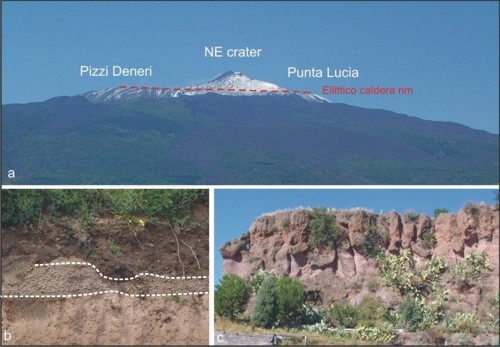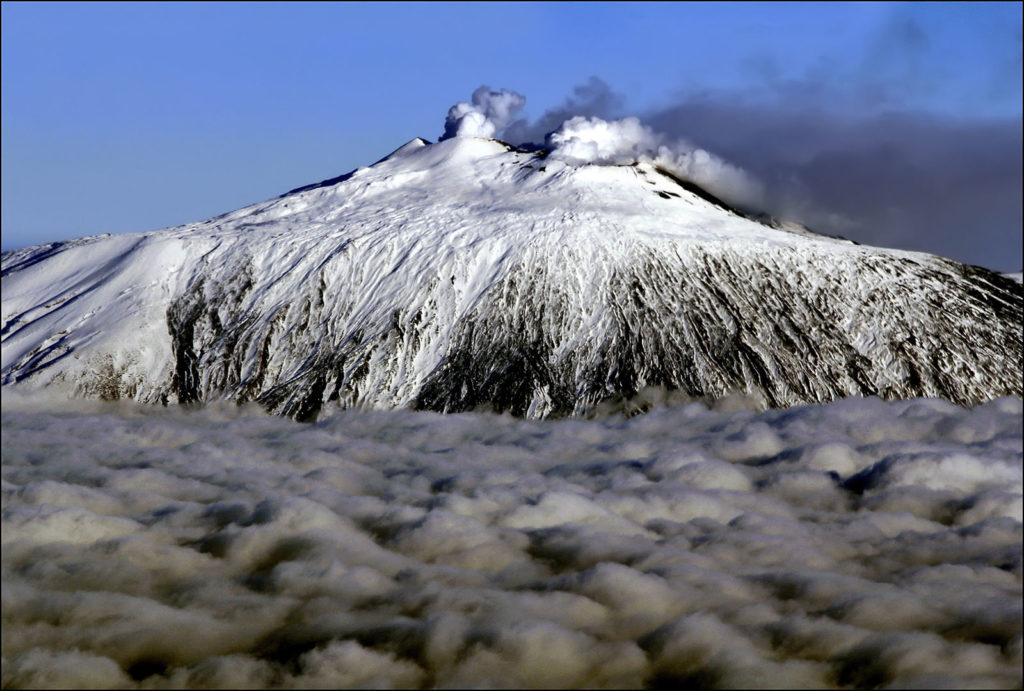 In Etna’s history, the Elliptical was its first great
stratovolcano
In Etna’s history, the Elliptical was its first great
stratovolcano
, with a shape very similar to the present one. Its activity began around 66,000 years ago and ended 15,000 years ago, when today’s eruptive era began, the era of the Mongibello Recente.
The study of the Elliptical’s lava flows and volcanic products present in the area of the Valle del Leone suggests that the previous volcanic structure was higher than it is now, reaching an altitude of around 3600 metres. However, as in all stories related to the life of a volcano, there are constructive periods as well as destructive ones. At the end of the Elliptical’s life around 15,000 years ago, the entire summit area sank. This formed a large elliptical
caldera
, which is where the volcano took its name, up to 8 km long at its widest point. Recently, scientists discovered that the formation of a caldera like this one can be linked to a period that also occurred in other phases of Etna’s life, where the emission of very large and abnormal volumes of lava flows quickly emptied the magma chamber and led to the collapse of its roof, causing the caldera to form.
